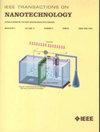Graphene Oxide Paper as a Lightweight, Thin, and Controllable Microwave Absorber for Millimeter-Wave Applications
IF 2.1
4区 工程技术
Q3 ENGINEERING, ELECTRICAL & ELECTRONIC
引用次数: 0
Abstract
The production and verification of microwave absorbers are a subject of high priority. These are due to the fast development of telecommunication technologies and the need to reduce electromagnetic pollution. Such materials are implementable in multiple industries, including military, medical, and laboratory equipment. One should remember that the desired material should exhibit a high total shielding effectiveness石墨烯氧化物纸作为毫米波应用中的轻质、薄型和可控微波吸收器
微波吸收器的生产和验证是一个高度优先的课题。这是由于电信技术的快速发展和减少电磁污染的需要。此类材料可应用于多个行业,包括军事、医疗和实验室设备。需要注意的是,所需的材料应具有较高的总屏蔽效能 SE $_{T}$ 和可控的性能特性。在这项工作中,我们制作了一种超薄氧化石墨烯纸,并验证了它是一种大范围、可控的微波吸收器。逐步(100 $^\circ$ C - 200 $^\circ$C - 300 $^\circ$C)热还原的厚度为 4.95 μm 的 G-Flake 氧化石墨烯纸显示出 1.86 S/cm 的电导率。燃烧元素分析表明,还原程度较轻,氧气比例为 22.4%(还原前为 50.9%)。拉曼光谱表明,热处理后的 Stone-Wales 缺陷受到了限制。在 W 波段频率区域测量了微波吸收,对于厚度为 5μm 的单个还原纸片,SE$_{T}$/t 参数达到 606 dB/mm。电导率的可控增加导致了传导损耗,孔隙的出现使散射成为可能,而吸收仍然是主要的屏蔽机制。
本文章由计算机程序翻译,如有差异,请以英文原文为准。
求助全文
约1分钟内获得全文
求助全文
来源期刊

IEEE Transactions on Nanotechnology
工程技术-材料科学:综合
CiteScore
4.80
自引率
8.30%
发文量
74
审稿时长
8.3 months
期刊介绍:
The IEEE Transactions on Nanotechnology is devoted to the publication of manuscripts of archival value in the general area of nanotechnology, which is rapidly emerging as one of the fastest growing and most promising new technological developments for the next generation and beyond.
 求助内容:
求助内容: 应助结果提醒方式:
应助结果提醒方式:


